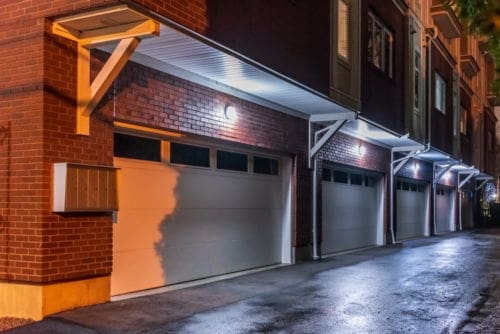Energy efficiency and environmental friendliness are all the rage these days, and it’s easy to see why. Not only are we becoming increasingly more aware of the negative effect our technologies can have on the planet, but also how much money we can save in the long run by using energy-efficient devices.
As a result, many sleek and modern garage doors in San Diego, CA, are designed and installed with efficiency in mind. But how exactly does this work? How are energy-efficient garage doors different from regular models, and is it possible to make an older door more efficient?
We have previously explored the history of garage doors and discussed some bleeding-edge garage door technologies that may soon become an everyday part of our homes. Now we’ll address a few commonly asked questions about garage door efficiency. Read on.
Does a garage door use a lot of electricity?
Not at all. Electric garage doors operate for only a couple minutes on any given day, so they use very little power while opening and closing. However, they can spend 3-5 times more electricity when they’re in stand-by mode.
This is because, like any device that can be operated remotely, a garage door opener is always turned on. Even when it’s not doing anything, it’s always “listening” for the radio signal that will tell it to raise or lower the door. This idle electrical draw is known as a “phantom load”.
Despite its scary name, this phantom load is nothing to be concerned about. A garage door consumes 500W per minute during use, which translates to 0.033kWh per day if you fully open and close it 4 times a day. In standby mode, a garage door spends about 0.12kWh per day. All of this translates to just 4.6kWH per month or about $1.4 added to your energy bill.
What makes a garage door energy efficient?
What truly separates an efficient garage door from a regular one is how it affects the rest of your property. Due to their large size, garage doors represent a significant portion of your exterior walls and therefore act as a major factor in the overall energy efficiency of your home.
Your garage door of choice should have:
Good insulation
Efficient garage doors have a low U-factor (.35 or less) and a high R-value (12 or more). This means they’re resistant to temperature fluctuations and won’t absorb heat from the rest of your home during the colder months.
Multiple layers
Multi-layered garage doors are naturally more insulative than single-layered ones. What’s more, single-layered doors can be made more insulative and therefore more efficient by adding an internal layer of polyurethane.
No air leaks
All parts of a garage door need to be properly fitted to its frame to keep cool air from escaping during summer, and cold air from getting in during winter. Professional installation and regular garage door maintenance is a must to prevent energy loss due to air leaks.
Who installs sleek and modern garage doors in San Diego, CA & the nearby communities?
For over 70 years, Radford Garage Doors & Gates of San Diego has been supplying residential and commercial clients with professional garage door installation, repair, maintenance, and replacement services. We won numerous accolades over the years and garnered a long list of satisfied customers.
We operate throughout San Diego and the surrounding communities, so you can trust us to meet your needs regardless of whether your home or premises are located in Pacific Beach or at the very center of the city. Call us today.



San Diego:
9185 Chesapeake Dr.
San Diego, CA 92123
(858) 925-2700
Mission Viejo:
27281 Las Ramblas, Suite 200,
Mission Viejo, CA 92691
(949) 749-7665
Email:
info@radforddoors.com
Google Rating
4.9